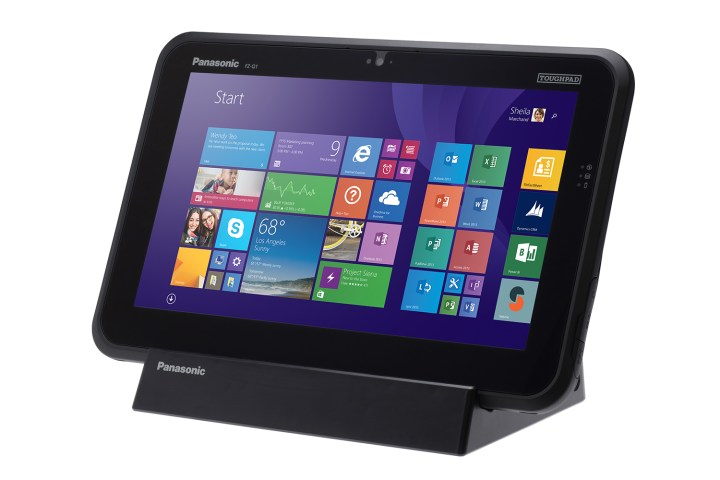
Aimed at users in home health, transportation, retail, and small business applications, the ToughPad series is designed to mimic the development of robust and rugged notebooks. To make that possible with the new FZ-Q1, Panasonic equipped it with a shock absorbing case and a magnesium alloy chassis. That makes it capable of withstanding drops (the press release does not say from how high), and it’s dust and water resistant too.
Its passively cooled, so is entirely silent, and there are no mechanical parts which can be knocked loose if it receives an impact. You’re unlikely to let it slip from your fingers, though, as there’s an easy-grip bottom cover.
The display supports 10-point multi-touch, with a resolution of 1080P, and features an anti-reflective screen cover to make it usable outdoors as well as in bright environments. It also has a quick-charge battery that lasts longer, and is said to charge up quicker than consumer grade hardware – though Panasonic didn’t say how fast or how long, exactly.
For connectivity, the FZ-Q1 comers with Wi-Fi, Bluetooth and optional 4G LTE support, and has USB 3.0 and MicroSDXC ports along its side. There’s also an option for an insertable, contactless SmartCard reader, should you wish to use the tablet for payment or security processing.
There’s even a 2MP webcam facing the user, and an 8MP rear facing camera to show off your surroundings, if needed.
Two models will be made available when the FZ-Q1 is launched in March, a standard and a performance model. The former will come with the Celeron N2807 CPU, 4GB of RAM and a choice of 64GB of eMMC storage or a 128GB SSD. The latter however will have the Core i5-4302Y CPU, 8GB of memory and a choice of 128 or 256GB SSD.
Both will ship with Windows 8.1, though the standard edition will be cheaper at $1,000, while the performance version will retail for $1,700.




